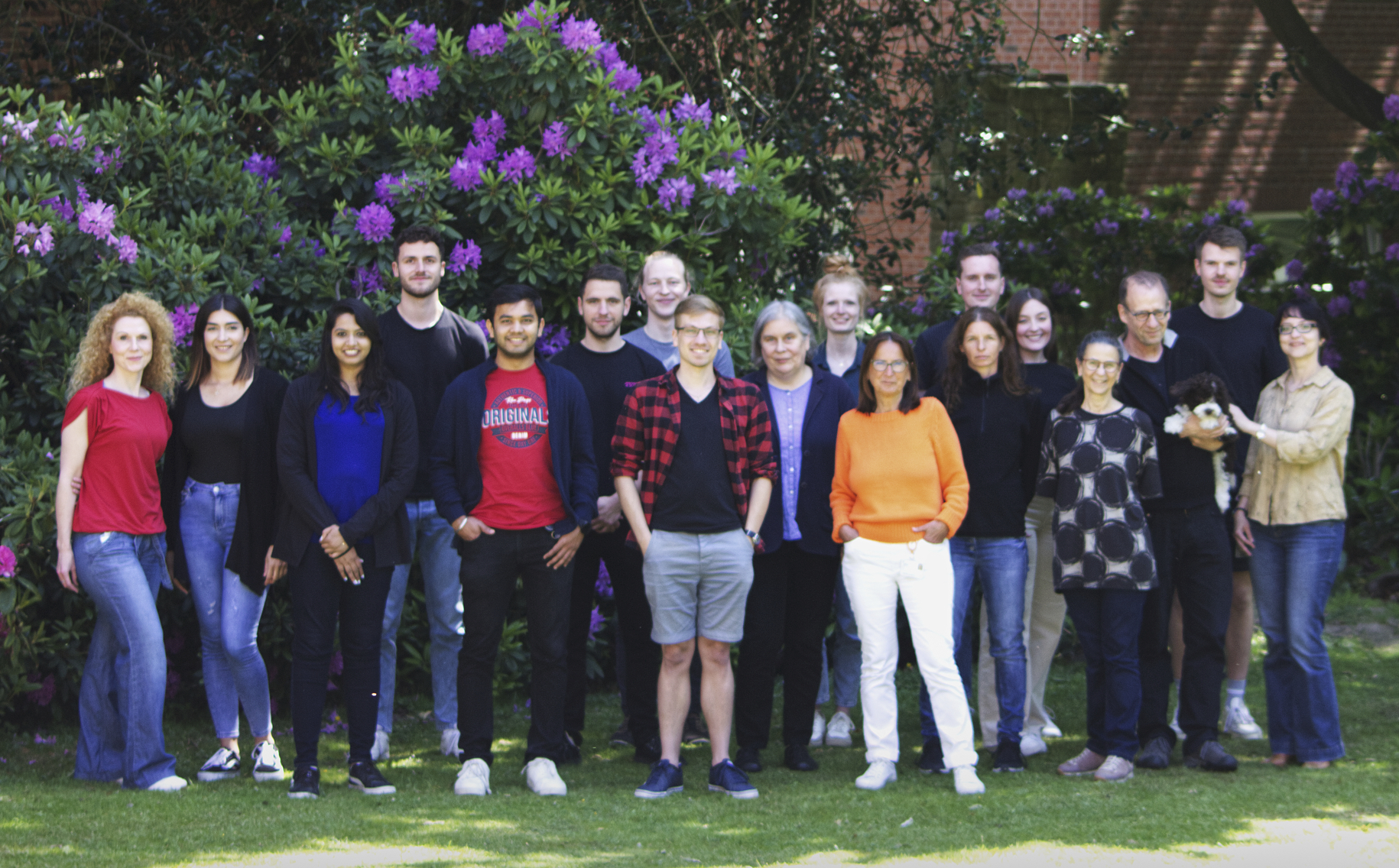Lab
Raz Lab
|

|
Statement of Research Interest
Primordial Germ Cells (PGCs) of zebrafish originate at random positions with respect to the dorsoventral axis. Yet, within 24 hours of development most of the cells arrive at distinct bilateral positions from which they coalesce into a gonad. We use zebrafish PGCs as model for cell fate specification, motility and directed migration in-vivo 3D environment. Different research lines in each area are under investigation.
* Cell fate specification
To learn more about the molecular mechanisms of PGC specification in zebrafish, we initiated screens for genes that are expressed in the germ cells at different time points during early embryogenesis. Results of In-Situ hybridization screens, Microarray data and next generation sequencing were combined to highlight the most crucial players in PGCs specification. Functional analysis of these genes are being investigated using different genetic approaches including morpholino knock-down assays as well as knock-out generation using Zinc finger nucleases (ZFNs) and TALENs.
For example, morphant embryos for Dead End (Dnd - maternally provided germ plasm component) loose their PGCs through Apoptosis by the end of first day of development. We found that Dnd functions by protecting specific mRNAs from microRNA inhibitory effects. We set to find protein interaction partners of Dnd as well as protected mRNAs, to understand the molecular basis of fate specification and maintenance in zebrafish PGCs.
* Motility
Zebrafish PGCs produce protrusions in the form of blebs during their migration. This is intrinsic behavior of PGCs and independent of external guiding cue. We would like to understand the basis for this type of motility.
Several projects in the lab use genetic and biophysical approaches to investigate mechanisms of bleb formation in PGCs, characteristics of germ cells blebs and their actual contribution to cell motility.
The nature and coordination of forces inside and outside of motile germ cells including internal pressure, differential contractile forces and regulation of adhesiveness to neighboring cells are among other projects, which are currently under investigation in our lab.
* Directed migration
We have previously identified the attractive signal for germ cell directed migration as the chemokine Cxcl12a.
PGCs migrate along the gradient of Cxcl12a that is detected by the Cxcr4b receptor expressed in the PGCs. The distribution of Cxcl12a is dynamically shaped by a decoy receptor CXCR7 expressed in somatic cells.
We are currently investigating the molecular signaling cascade downstream of CXCR4b and mechanisms of gradient sensing by PGCs.
* Cell fate specification
To learn more about the molecular mechanisms of PGC specification in zebrafish, we initiated screens for genes that are expressed in the germ cells at different time points during early embryogenesis. Results of In-Situ hybridization screens, Microarray data and next generation sequencing were combined to highlight the most crucial players in PGCs specification. Functional analysis of these genes are being investigated using different genetic approaches including morpholino knock-down assays as well as knock-out generation using Zinc finger nucleases (ZFNs) and TALENs.
For example, morphant embryos for Dead End (Dnd - maternally provided germ plasm component) loose their PGCs through Apoptosis by the end of first day of development. We found that Dnd functions by protecting specific mRNAs from microRNA inhibitory effects. We set to find protein interaction partners of Dnd as well as protected mRNAs, to understand the molecular basis of fate specification and maintenance in zebrafish PGCs.
* Motility
Zebrafish PGCs produce protrusions in the form of blebs during their migration. This is intrinsic behavior of PGCs and independent of external guiding cue. We would like to understand the basis for this type of motility.
Several projects in the lab use genetic and biophysical approaches to investigate mechanisms of bleb formation in PGCs, characteristics of germ cells blebs and their actual contribution to cell motility.
The nature and coordination of forces inside and outside of motile germ cells including internal pressure, differential contractile forces and regulation of adhesiveness to neighboring cells are among other projects, which are currently under investigation in our lab.
* Directed migration
We have previously identified the attractive signal for germ cell directed migration as the chemokine Cxcl12a.
PGCs migrate along the gradient of Cxcl12a that is detected by the Cxcr4b receptor expressed in the PGCs. The distribution of Cxcl12a is dynamically shaped by a decoy receptor CXCR7 expressed in somatic cells.
We are currently investigating the molecular signaling cascade downstream of CXCR4b and mechanisms of gradient sensing by PGCs.
Lab Members
| Ermlich, Laura Graduate Student | Gupta, Antra Graduate Student | Hoffmann, Dennis Graduate Student |
| Kühl, Lukas Graduate Student | Limon Tejeda, Tamara Graduate Student | Madiwale, Shantanu Graduate Student |
| Ophaus, Moritz Graduate Student | Schick, Jan Graduate Student | Wegner, Julian Graduate Student |
| Jordan, Ursula Technical Staff | Messerschmidt, Esther-Maria Technical Staff | Sandbote, Ines Technical Staff |
| Glaesner, Gabriele Administrative Staff |
